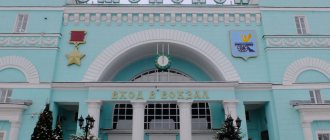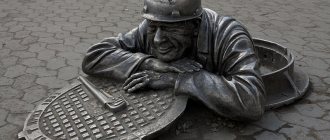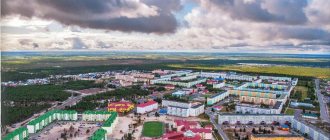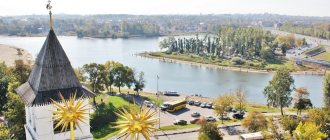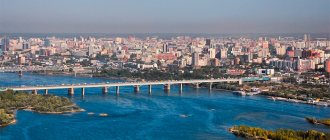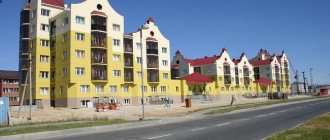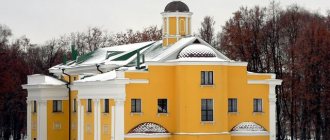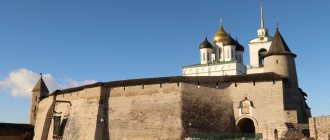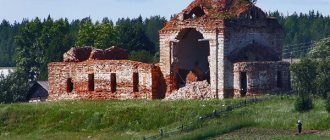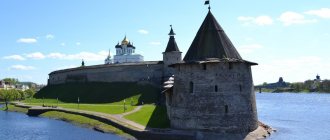Minusinsk is one of those Siberian cities where the spirit of pre-revolutionary antiquity has been well preserved. In fact, the Yenisei analogue of the cities of the Golden Ring. It is worth a visit for lovers of history, architecture and museums. The choice of the latter in Minusinsk is one of the best among the regional centers of Siberia. The subjects of the exhibitions are varied, from Decembrists to retro cars. We will tell you how to spend time in Minusinsk and what to see there.
My name is Boris, I visited Minusinsk twice in August. First I came to the Minusinsk Tomato festival, and a couple of days later I stopped by the city again to visit museums and examine in more detail both parts of it, located along the banks of the Minusa River.
Minusa River / photo by the author
What to see in Minusinsk
Minusinsk Local Lore Museum named after. N. M. Martyanova
Minusinsk Museum of Local Lore / photo by the author
The oldest museum of the vast Krasnoyarsk Territory is located not in Krasnoyarsk, but in small Minusinsk. Created in 1877. It is 14 years older than the Trans-Siberian Railway. It is a rare case in Siberia that a museum in a county town appeared in the 19th century. In 1893 and 1900, his collections received awards at exhibitions in Chicago and Paris.
One of the first local history museums in the Asian part of Russia was housed in a two-story mansion built in 1890. Interestingly, in the same building there was a library, which Vladimir Lenin visited during his Siberian exile, as a memorial plaque on the facade reminds.
From the exhibition you will learn the history of the Minusinsk Basin from the moment the first people appeared in these areas. Among the exhibits on the first floor I would like to note medieval steles with runic inscriptions and reconstructed houses of local residents and khans. The exhibition on the second floor tells about the settlement of the Minusinsk region in the 18th-20th centuries by Russians, Ukrainians, Germans and representatives of other peoples.
Memorial Museum Apartment of G. M. Krzhizhanovsky
Museum Apartment of G. M. Krzhizhanovsky / photo by the author There
are only two museums in Russia dedicated to this revolutionary and scientist, the creator of the plan for the electrification of the USSR - GOELRO. The first is located in the center of Moscow, and the second opened in Minusinsk in the year of Lenin’s 100th anniversary.
The exhibition is housed in a two-story wooden mansion built in 1878. Gleb Krzhizhanovsky lived in this house for a short time, in 1898-1899. The exhibition is not as interesting and varied as in the Moscow museum. You can see household items from pre-revolutionary Russia in other places.
Decembrists Museum
Minusinsk is one of those cities in Siberia where the Decembrists were exiled in 1826.
In total, 8 people came to the settlement. They lived in this city from 1827 to 1861 and distinguished themselves in the development of agriculture in the Minusinsk Basin. The Decembrists grew watermelons, melons and fruits. Some of them opened the first school in the city. The museum opened in 1997 after lengthy preparation. The exhibition is housed in one of the oldest wooden houses in the city, which is about 200 years old.
Museum of Cars and Motor Vehicles of the USSR
A private museum, opened in 2005 by a family who moved from Norilsk. In one room there are cars from the 1930s to the 1970s, in the other there are motorcycles and bicycles. The rest of the territory is occupied by models, cars undergoing restoration and various items of Soviet everyday life. It is interesting that it operates a kind of “museum within a museum”, which tells about the history of the Usinsky tract.
Museum of Minusinsk Drama Theater
One of the oldest theaters in Siberia. Its museum is the only free one in the city. A small exhibition occupies a hall on the ground floor of the theater, founded 4 years later than the Martyanov Museum, in 1882.
Festival "Minusinsk Tomato"
Tomatoes have become the same symbol for the fertile Minusinsk Basin as watermelons are for Astrakhan. On the day of the festival you will see various folk performances, an exhibition of vintage cars near the building of the local history museum, a “tomato parade”, and a fair of local products.
The festival is held in mid-August, target the third Saturday. This is the best day to visit the city.
Historical center of Minusinsk
The historical part with pre-revolutionary buildings is located on the northern bank of the Minusa River. Conveniently, there is also a bus station there, where you can arrive by bus from Abakan and start sightseeing. Minusinsk was built up according to a plan approved in 1844. About 500 wooden and stone buildings built before 1917 have survived. Together they form the ensemble of the district Siberian city.
Spassky Cathedral
Spassky Cathedral in Minusinsk
The first stone church in the city. Built in 1813. The cathedral stands at the intersection of Komsomolskaya and Red Partisans streets, between the local history museum and the drama theater. It’s an interesting neighborhood, so it fits well into the look of the historical part of Minusinsk.
Merchant Vilner's House
Of the pre-revolutionary buildings, this example of Siberian baroque from 1909-1912 stands out. It’s a pity that it didn’t house one of the branches of the local history museum. The house is located opposite Lenin Park and the city administration.
Lenin Park
Monument to Shchetinkin / photo by the author
It is worth walking around its perimeter and not only to admire the city architecture. In the center of the park there is a monument to Ilyich wearing earflaps, large for a regional center. This version of a monument to a leader is very rare. The size can be explained by the fact that Lenin was in exile near Minusinsk at the end of the 19th century.
There is also a monument to the Siberian Red Partisans of the Civil War in the park. It was about them that in 1971 the Sverdlovsk Film Studio made the film “Nomadic Front”. These partisans were commanded by Pyotr Shchetinkin. The most famous monument to him is located across the road from the north-eastern corner of the park, between the Vilner house and the Krzhizhanovsky Museum.
Soviet Minusinsk
Entrance to Victory Park / photo by the author
This is the name of the neighborhoods on the southern bank of Minusa, buses run through them to Abakan. There are a lot of buildings from the 1960-1980s, a market, shops and cafes, a monument to Tomato and Victory Park with a memorial, a T-34 tank and a monument to children of war.
general review
Minusinsk is the administrative center of the city district and region of the same name and belongs to the Krasnoyarsk Territory of the Russian Federation. The city is located along both banks of the Yenisei River in Eastern Siberia. The area of the city of Minusinsk is 17.7 sq. km.
The Minusinsk railway station is located at a distance of 12 kilometers, and Abakan is located relatively close (25 kilometers). The federal highway M54 “Yenisei” passes near the city. From the regional center of Krasnoyarsk to Minusinsk 422 kilometers.
The founding date is considered to be 1739, when the village of Minyusinskoye was built. The settlement got its name from the Minusa River, which means “big water” in Turkic. In 1822 it received city status.
Minusinsk is located in a time zone shifted relative to Moscow by 4 hours. In Russia it is designated as MSK+4. Krasnoyarsk and Minusinsk are in the same time zone.
Local kitchen
Minusinsk is located on historical Khakassian lands, but it is extremely difficult to find the cuisine of this people in the city. There are problems with it even in Abakan.
You can have a snack in a cafe serving Russian-Soviet or Georgian cuisine, in a pizzeria or in canteens. There are more modern establishments like Eating an Elephant , but in the historical part of the city you can come across canteens with nostalgic Soviet decoration. The city has a developed food industry. Local dishes worth trying are cheeses, canned vegetables, meats and confectionery.
Buy a puck of local cheese “Kachkaval”, which received a gold medal at an international competition.
Between two wars
The construction of new industrial enterprises, including soap factories and candle factories, contributed to the attraction of labor resources. In 1914, there were 15,000 people in the city of Minusinsk.
In the revolutionary year of 1917, the “Lists of settlements of the Yenisei province” indicate data on the total number of residents - 12,807, of which 5,669 were male and 7,138 female, including 259 military. After the end of the civil war, industry began to develop in the city . In 1926, several dozen enterprises of various forms of ownership (private, state, cooperative) operated in the settlement. For example, yeast, tobacco factory "Dynamo", which produced products worth 1.2 million rubles. At that time, the population of Minusinsk was 20,400 people.
The city still remained a place of exile; for example, the prominent revolutionary figure L.B. Kamenev was exiled here. By 1931, the number of residents decreased slightly to 19,900, which was also associated with the beginning of repression. In subsequent years, the city was actively improved, new schools, a pedagogical college, courses for nurses, machinists, state farm and forestry apprenticeships were opened. The number of inhabitants increased to 31,354 in 1939.
How to get there, when to come and where to stay
It is best to come to Minusinsk in mid-August, when City Day is celebrated and the tomato festival is held.
The night train from Krasnoyarsk arrives in Minusinsk at about 6 o'clock in the morning. You can take the same train back at 19:00.
If you want to go overnight, I advise you to stay in Abakan, where there is a larger selection of hotels and hostels. From the capital of Khakassia to Minusinsk it is worth making a trip for the whole day; buses run there from 7 am to 10 pm.
Have you been to Minusinsk? How do you like this small Siberian city? Share your impressions with us and send your stories to the “Small Towns of Russia” section. We will publish the best on our website Dorogi-ne-dorogi.ru.
Second half of the 19th century
In 1856, the population of Minusinsk was 2,200 people, having more than tripled in two decades. At this time, the transition from peasant labor to other types of activity began. A merchant class is gradually forming in the city. The peculiarity of the local merchants was that they only lived in Minusinsk, and were engaged in trade in other cities of Siberia.
The document “List of populated places of the Yenisei province” for 1859 noted that in the district city of the Minusinsk district, located 551 versts from the provincial city of Yeniseisk, there were 372 houses in which 2,936 people lived, including 1,491 male residents gender and 1,445 female. Trade and crafts developed in the city, and the first small factories appeared. The population continued to grow rapidly, largely due to the peasants of the central Russian provinces. In 1897, the population of Minusinsk was 10,231 people.
Climate[edit]
Köppen
climate classification Dfb
/
Dwb
) with very cold winters and warm summers. Precipitation is quite low, but from June to September there is much more rainfall than at other times of the year.
| Climate data for Minusinsk | |||||||||||||
| Month | Jan | Feb | Mar | Apr | May | Jun | Jul | Aug | Sep | October | But I | December | Year |
| Record high °C (°F) | 6,7 (44,1) | 9,6 (49,3) | 24,2 (75,6) | 33,0 (91,4) | 37,7 (99,9) | 38,2 (100,8) | 39,3 (102,7) | 37,7 (99,9) | 32,6 (90,7) | 25,8 (78,4) | 16,1 (61,0) | 6,7 (44,1) | 39,3 (102,7) |
| Average high °C (°F) | -12,9 (8,8) | -9,4 (15,1) | -0,5 (31,1) | 10,5 (50,9) | 18,8 (65,8) | 24,7 (76,5) | 26,8 (80,2) | 24,0 (75,2) | 17,2 (63,0) | 8,4 (47,1) | -3,0 (26,6) | -10,8 (12,6) | 7,8 (46,1) |
| Daily average °C (°F) | -19,5 ( -3,1 ) | -17,7 (0,1) | -8,0 (17,6) | 3,3 (37,9) | 11,1 (52,0) | 17,5 (63,5) | 20,1 (68,2) | 17,0 (62,6) | 10,0 (50,0) | 2,0 (35,6) | -8,4 (16,9) | -16,7 (1,9) | 0,9 (33,6) |
| Average low °C (°F) | -25,3 (-13,5) | -24,4 ( -11,9 ) | -14,6 (5,7) | −3,2 (26,2) | 3,5 (38,3) | 10,1 (50,2) | 13,2 (55,8) | 10,3 (50,5) | 3,8 (38,8) | −3,1 (26,4) | −13,3 (8,1) | -22,2 (-8,0) | -5,4 (22,2) |
| Record low °C (°F) | -52,2 (-62,0) | -50,3 (-58,5) | -46,7 (-52,1) | -32,3 ( -26,1 ) | -10,9 (12,4) | -3,5 (25,7) | 2,7 (36,9) | -2,8 (27,0) | -11,5 (11,3) | -24,0 (-11,2) | -42,9 (-45,2) | -49,4 (-56,9) | -52,2 (-62,0) |
| Average precipitation, mm (inches) | 8,6 (0,34) | 6,9 (0,27) | 7,1 (0,28) | 15,3 (0,60) | 33,7 (1,33) | 56,4 (2,22) | 66,0 (2,60) | 62,5 (2,46) | 43,8 (1,72) | 23,4 (0,92) | 14,2 (0,56) | 11,5 (0,45) | 349,4 (13,75) |
| Average number of days with precipitation (≥ 0.1 mm) | 11,7 | 7,6 | 7,4 | 11.0 | 10.0 | 10,7 | 12,7 | 12.1 | 10.0 | 12,7 | 11,3 | 14,8 | 132 |
| Average relative humidity (%) | 79,5 | 74,9 | 70,5 | 60,6 | 56,5 | 64,4 | 71,2 | 71,9 | 69,1 | 75,6 | 73,4 | 76,9 | 70,4 |
| Average sunshine hours per month | 74,4 | 96,7 | 189,1 | 216,0 | 254,2 | 276,0 | 272,8 | 232,5 | 165,0 | 105,4 | 84,0 | 49,6 | 2 015,7 |
| Source: climbase.ru (1927-2008) [15] | |||||||||||||
Links[edit]
Notes[edit]
- ^ abcdefg Law No. 10-4765
- ^ a b Federal State Statistics Service (2011). “All-Russian Population Census 2010. Volume 1" [All-Russian Population Census 2010, vol. 1]. All-Russian Population Census 2010 [All-Russian Population Census 2010]
. Federal State Statistics Service. - "26. The size of the permanent population of the Russian Federation by municipalities as of January 1, 2022". Federal State Statistics Service. Retrieved January 23, 2022.
- ^ abc Law No. 13-3049
- Law No. 13-3022
- "On the Calculation of Time". Official Internet portal of legal information
. June 3, 2011. Retrieved January 19, 2022. - Post office. Information and computing center of OASU RPO. ( Post office
).
Search for postal service objects ( postal Search for objects
) (in Russian) - ↑
Federal State Statistics Service of Russia (May 21, 2004).
“The population of Russia, the constituent entities of the Russian Federation as part of federal districts, urban settlements, settlements, settlements of 3 thousand or more people” [Population of Russia, its federal districts, federal districts, districts, urban settlements, rural settlements - administrative centers and rural settlements with a population of more than 3,000 people] (XLS). All-Russian Population Census 2002
. - “All-Union Population Census of 1989. The current population of union and autonomous republics, autonomous regions and districts, territories, effects, urban settlements and rural district centers” [All-Union Population Census of 1989: current population of union and autonomous republics, Autonomous regions and districts, territories, regions, districts, urban settlements and villages performing the functions of district administrative centers. All-Union Population Census of 1989 [All-Union Population Census of 1989]
.
Institute of Demography of the National Research University: Higher School of Economics [Institute of Demography of the National Research University: Higher School of Economics]. 1989 - via Demoscope Weekly
. - Grousset, Rene (1970). Empire of the Steppes. Rutgers University Press. pp. 17-19, 66-67. ISBN 0-8135-1304-9.
- ^ abc N. I. Drozdov, V. S. Borovets “Yenisei Encyclopedic Dictionary”. Krasnoyarsk, 1998 (ISBN 5883290051), p. 391.
- My Krasnoyarsk [My Krasnoyarsk]. Administration of Krasnoyarsk / Internet center of the Siberian Federal University. Retrieved August 24, 2009.
- Minusinsk[Minusinsk]. People's Encyclopedia of Cities and Regions of Russia (People's Encyclopedia of Cities and Regions of Russia). Retrieved August 24, 2009.
- Minusinsk uprising [Minusinsk uprising]. CHRONOS. Retrieved April 12, 2014.
- "Minusinsk, Russia". Climatebase.ru. Retrieved January 23, 2013.
Second half of the 20th century
In the first years of the war, two regiments were formed in the city; more than 5,000 thousand Minusinsk residents died on the fronts of the Great Patriotic War. Some researchers believe that as a result of pre-war political repressions and taking into account the townspeople who died in the war, the population was renewed by almost 75%. According to the first post-war census in 1959, 38,318 people lived in the city.
In subsequent years, small industrial cooperatives of the post-war years were re-equipped and reconstructed into factories and furniture, shoe repair and clothing factories offered many new jobs. In 1967, the population of Minusinsk increased to 42,000 people. The development of the city is largely connected with the Minusinskneftegazrazvedka trust, which built a lot of housing and social and cultural facilities - a sports complex, the Geologist club. In 1979, the city had 56,361 inhabitants. The population increased due to the influx from the central regions of the country.
Modernity
The rapid growth of the population in the first half of the 80s was associated with the creation of the electrical complex; factories of high-voltage vacuum circuit breakers and special technological equipment were built. In 1987, the number of inhabitants reached 72,000 people. The population of Minusinsk reached its maximum (74,400 people) in 1992. In subsequent years, the number of city residents generally decreased. In post-Soviet times, the structure of the economy has changed significantly; now the population is offered jobs at a wood processing plant, agricultural industry, and small and medium-sized businesses. In 2016, the city had 68,309 residents.
